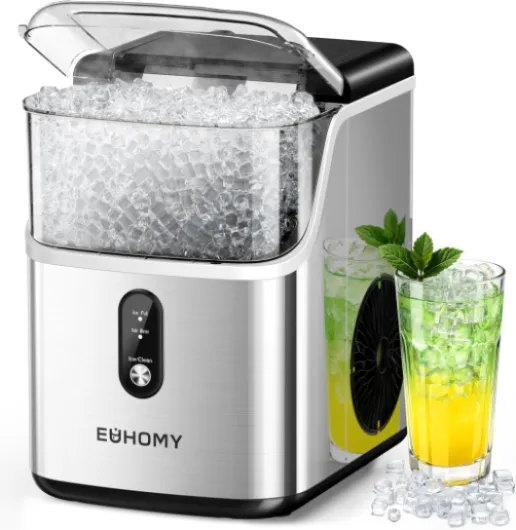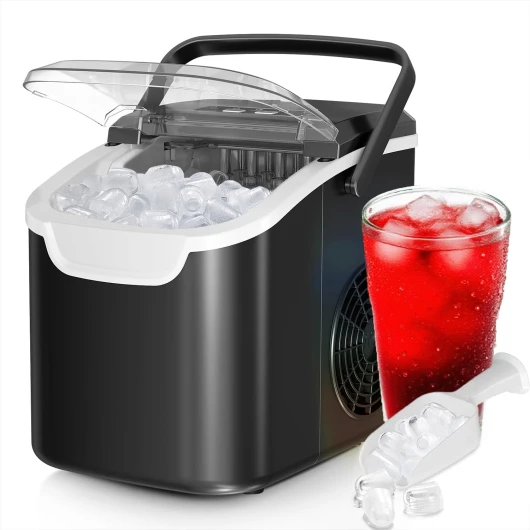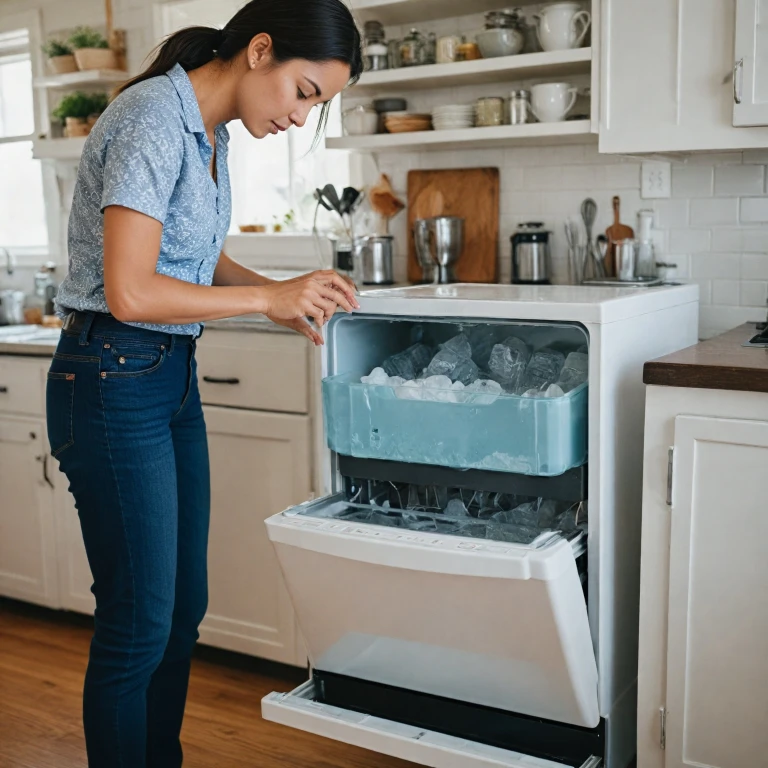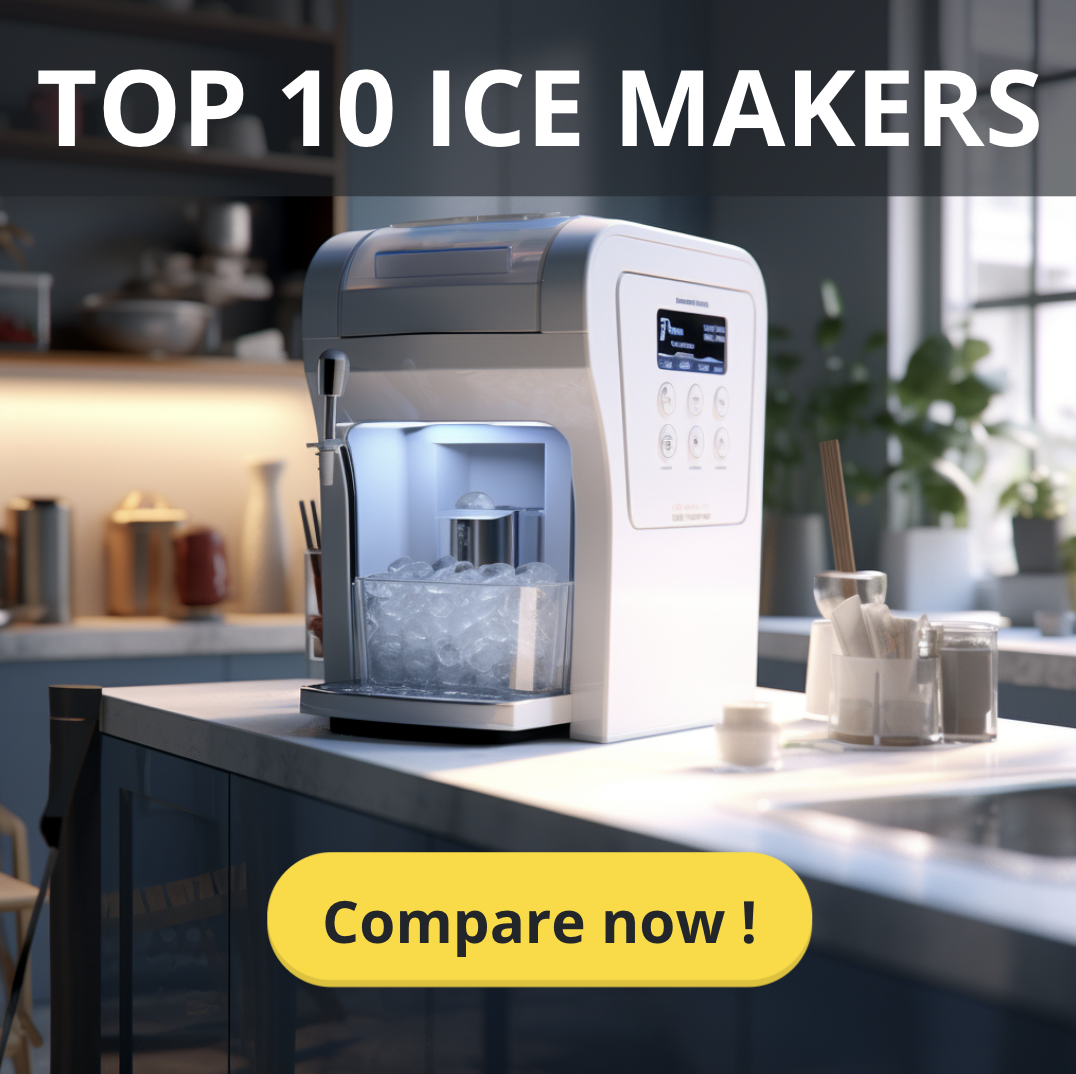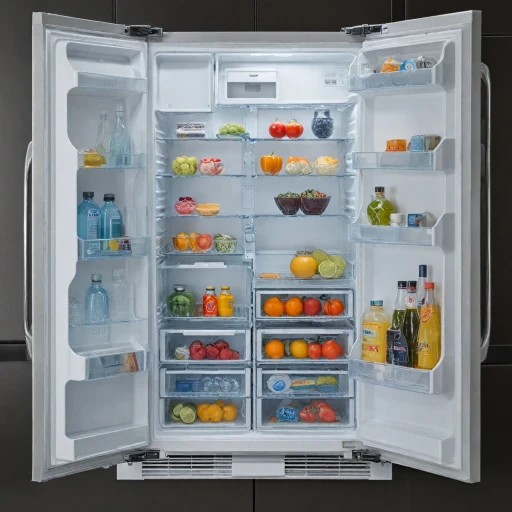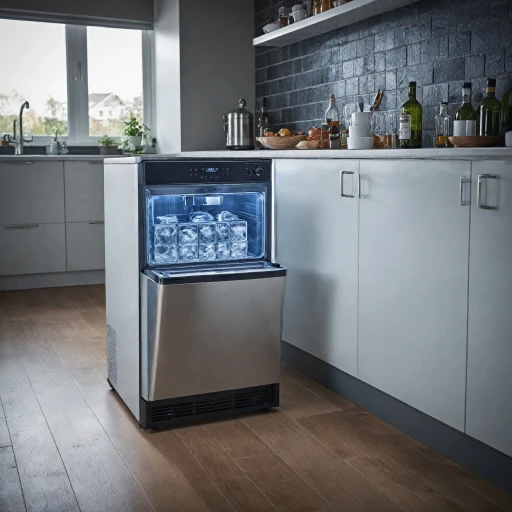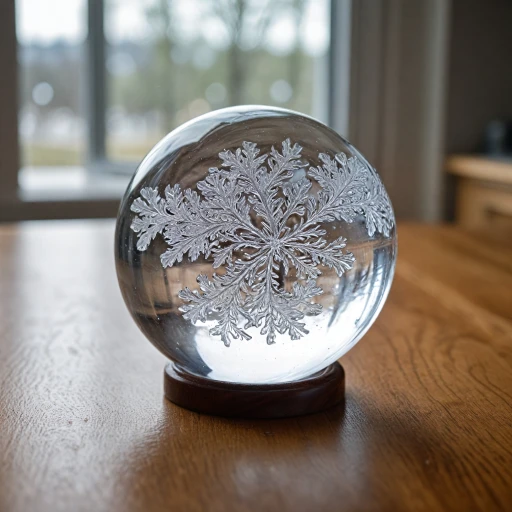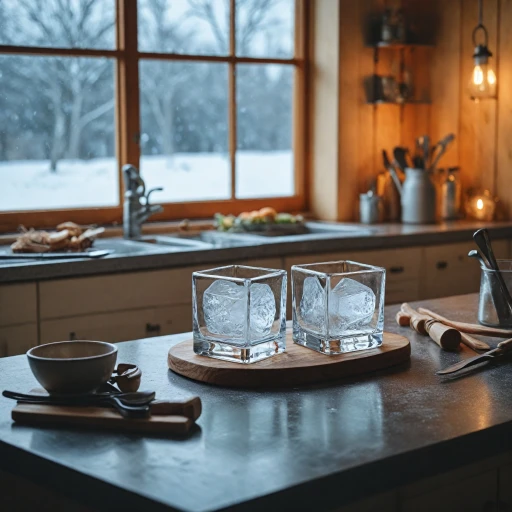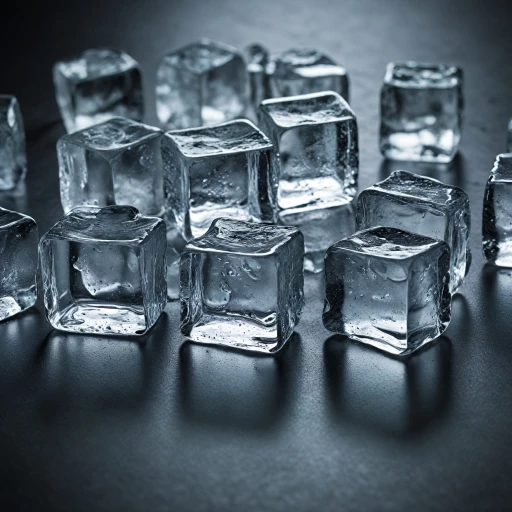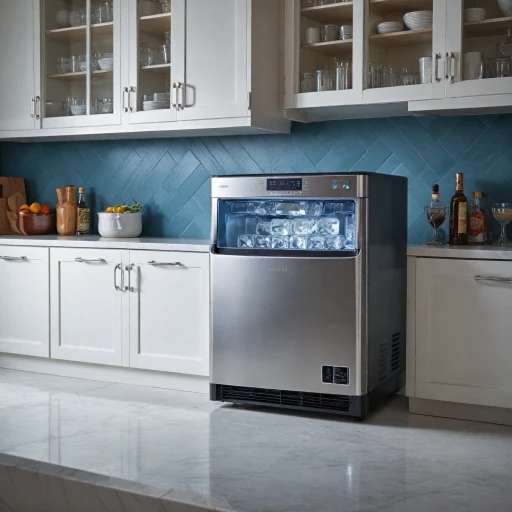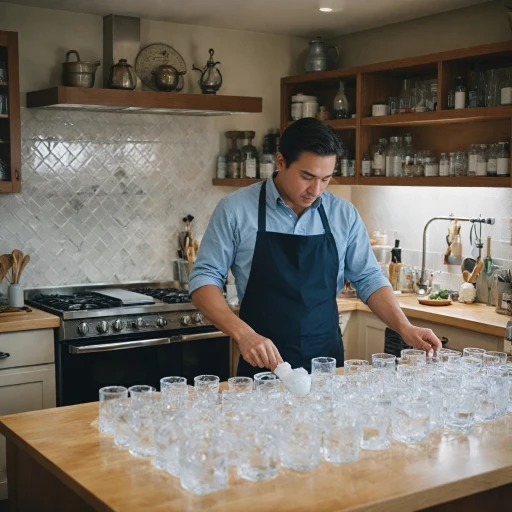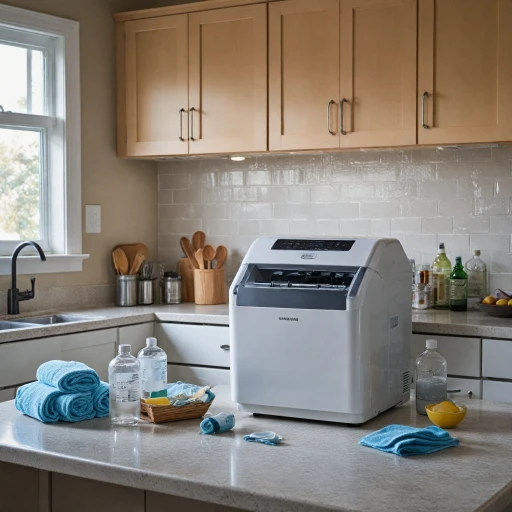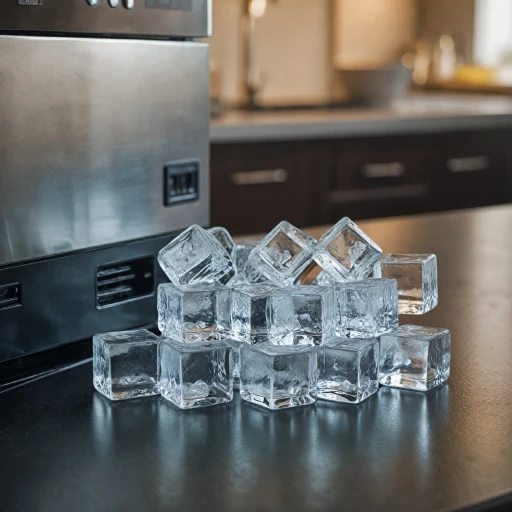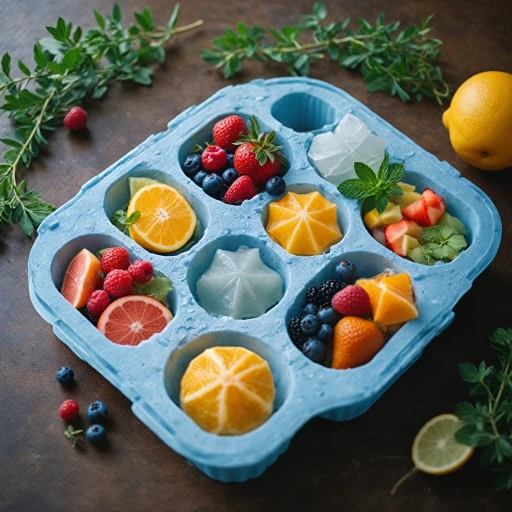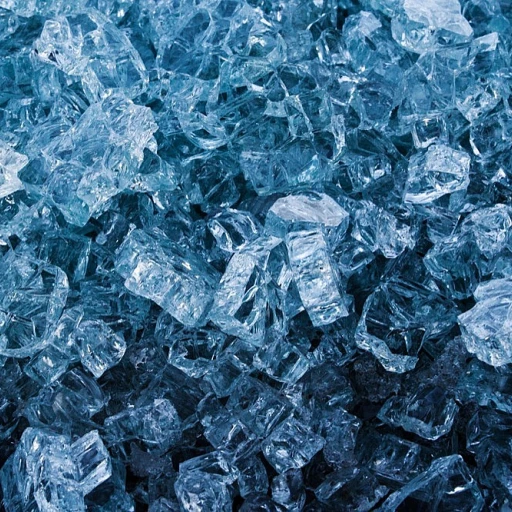
Understanding the Causes of a Jammed Ice Maker
Common Causes of Ice Maker Jams
Understanding why your ice maker might jam is the first step in resolving the issue. Several factors can lead to a blocked ice maker, and recognizing these can help you troubleshoot effectively.
Water Supply Issues
One of the most common causes of a jammed ice maker is an issue with the water supply. If the water valve is not functioning correctly or if there is low water pressure, the ice maker may not fill properly, leading to incomplete ice cubes or no ice at all. Ensuring that the water supply line is clear and the valve is open will allow for proper water flow.
Ice Blockages
Ice blockages can occur when ice cubes do not eject properly from the tray, causing a buildup in the ice bin. This can happen if the freezer compartment is too warm, preventing the cubes from freezing completely. Regularly checking the freezer temperature and ensuring it is set to the recommended level can prevent this issue.
Filter and Valve Problems
A clogged water filter can also lead to a jammed ice maker. Over time, filters can become blocked with impurities, restricting water flow. Replacing the filter regularly ensures a steady supply of filtered water to the ice maker. Additionally, a malfunctioning water valve can prevent the tray from filling, so it's important to check that the valve is in good working condition.
Mechanical Failures
Mechanical issues within the ice maker itself, such as a faulty motor or a broken plastic component, can also cause jams. These problems might require more advanced troubleshooting or even professional repair services. For more detailed guidance on handling these issues, you might find this comprehensive guide helpful.
By understanding these common causes, you can better identify the symptoms of a blocked ice maker and take appropriate action to resolve the issue.
Identifying Symptoms of a Blocked Ice Maker
Recognizing Common Signs
Identifying the symptoms of a blocked ice maker is essential for resolving issues quickly. Typically, a jammed ice maker will exhibit several signs that can help pinpoint where the problem lies.- Inconsistent Ice Production: If your ice maker stops producing ice entirely or significantly reduces its output, it might indicate a blockage in the system.
- Unusual Sounds: Grinding, clicking, or buzzing noises are often heard when ice cannot transition smoothly through the system.
- Overflowing Ice Bin: A glacier of ice accumulating in the ice bin suggests blocked ice cubes caught in the ice maker's mechanism.
- Water Supply Issues: Spotting water pooling inside the refrigerator or a constant drip ice can indicate a problem with the water supply or valve blockage.
- Malfunctioning Filter: A clogged or dirty water filter from traces of minerals or debris may reduce water flow, affecting ice cube quality and quantity.
Analyzing Potential Problems
It’s crucial to look into specific areas where blockages commonly occur to maintain your ice maker working smoothly:- Ice Cube Tray Blockage: Ice cubes or plastic shards stuck in the tray will prevent new ice from forming. Check for trapped debris.
- Blocked Water Valve: Clogged valves can restrict the water flow to the ice maker. The refrigerator compartment that feeds water into the system may face clogging, reducing efficiency.
- Frozen Water Line: A frozen water line can hinder water from reaching the ice maker. Ensuring both the main content and freezer compartment are at appropriate temperatures will help.
Basic Troubleshooting Steps
Initial Steps to Resolve Jamming
When dealing with a jammed ice maker in your refrigerator, understanding the basics can be the difference between quick resolution and prolonged frustration. Here are a few troubleshooting steps to get your ice maker back to its ice producing glory.
- Inspect the Ice Bin: Begin by checking the ice bin for any blockages. If ice cubes are clumped together, this may cause the ice maker to stop. Clear out any block ice formations from the ice bin and the entire maker bin.
- Check the Water Supply: A common issue in jammed ice makers is an inconsistency in water flow. Ensure that the water valve is open and the water line is not kinked. Also, verify that the water pressure is adequate to allow proper ice making.
- Verify the Water Filter: A clogged filter can often impede water flow, which is essential for seamless ice production. Consider replacing the filter water or cleaning it to enhance the flow of filtered water.
- Examine the Ice Maker Components: Look into the tray where ice forms. If cubes are stuck, gently remove them and check if the plastic fill tube or drip ice mechanism has any residue or ice blockages that need cleaning.
- Freezer Compartment Temperature: The freezer compartment should be maintained at the ideal temperature for quick formation of ice. If your refrigerator compartment is too warm, ice makers may struggle to freeze water efficiently.
- Thaw any Frozen Parts: Ice buildup can freeze parts of the ice maker itself. If you identify frozen sections, carefully thaw ice using heat-safe methods.
Ensuring these basic checks can often fix common glitches. For lasting functionality, consider adopting effective maintenance practices to keep the ice maker in decent working shape without frequent disruptions.
Preventive Maintenance Tips
Regular Cleaning and Inspection
To keep your ice maker in top shape, regular cleaning and inspection are crucial. Start by checking the ice bin and tray for any block ice or residue that might hinder the flow of ice cubes. A clean ice maker will allow for better ice production and help prevent common issues.
Check the Water Supply
Ensure that the water supply to your ice maker is consistent and free of blockages. Inspect the water valve and filter water system for any signs of wear or clogs. A steady water flow is essential for making ice efficiently. If you notice any drip ice or irregularities, it might be time to replace the filter or adjust the water pressure.
Monitor the Freezer Temperature
The freezer compartment should be set to the correct temperature to ensure that ice cubes freeze properly. If the freezer wall is too warm, it can affect the ice maker's performance. Regularly check the temperature settings in both the refrigerator compartment and the freezer to maintain optimal conditions.
Inspect the Ice Maker Components
Regularly inspect the plastic components of your ice maker, such as the maker bin and tray, for any signs of wear or damage. Replacing worn parts promptly will help maintain the efficiency of your ice maker. Additionally, ensure that the ice maker is properly aligned within the refrigerator to prevent any mechanical issues.
Schedule Routine Maintenance
Consider scheduling routine maintenance with a professional to ensure all parts of your ice maker are working correctly. This can help identify potential problems before they become serious, keeping your ice maker in good working order for longer.
When to Call a Professional
Knowing When It's Time for Expert Intervention
Even with diligent maintenance and troubleshooting, sometimes a jammed ice maker issue can be beyond the reach of DIY solutions. Here’s how to know when it's time to call in a professional:- Recurring Problems: If after following basic troubleshooting steps, like checking the water supply and ensuring the ice bin is clear, you're still experiencing issues with ice cubes not forming or the drip ice problem persists, you may be dealing with a more complex problem involving the water flow or valve system.
- Electrical Concerns: Issues with the electrical components of your ice maker, such as the motor or wiring in the refrigerator or freezer compartment, require expertise to resolve safely and effectively.
- Component Damage: If you suspect damage to the plastic parts such as the tray or any part of the freezer wall, repairs should be handled by someone familiar with appliance repair, to avoid further damage.
- Valve or Pump Issues: Problems with the fill valve or water filter that supplies filtered water to the ice maker might need professional assessment to ensure they are not blocking ice formation or causing a leak.
- Persisting Water Pressure Issues: When the water pressure does not suffice to fill the maker bin properly after checking the filter and other components, a specialist's insight is invaluable.
Choosing the Right Ice Maker for Your Needs
Evaluating Your Ice Maker Options
Choosing the right ice maker is crucial for maintaining an efficient and functional kitchen. With various options available, it’s important to consider several factors to ensure your ice maker meets your needs effectively.- Capacity Requirements: Determine how much ice your household typically uses to gauge the capacity you need. Whether you’re regularly hosting gatherings or have a large family, ensure your ice maker can fulfill your daily demand without overwhelming its ability to produce ice cubes.
- Space and Location: Consider the available space for your ice maker, whether it's in your refrigerator compartment, a standalone freezer, or a dedicated maker bin. Ensure the ice maker fits comfortably without obstructing other appliances or areas.
- Type of Ice: Decide whether you prefer clear, block ice or standard cubes. Different makers are designed for different purposes, so knowing your preference will help you select the suitable model.
- Water and Drainage: Confirm that your desired ice maker has convenient water supply connections and adequate drainage facilities. Some models require a specific water pressure to operate efficiently, so verifying these requirements in advance helps in selecting an appropriate unit.
- Additional Features: Modern ice makers come with a variety of features including filter water systems, automated tray filling, and plastic components designed for easy maintenance. Consider these additional options to enhance conveniency and performance.
- Energy Efficiency: Look for energy-efficient models that use less power without compromising ice production. This is particularly beneficial for long-term savings and environmental considerations.
-logo-retina.jpg)
